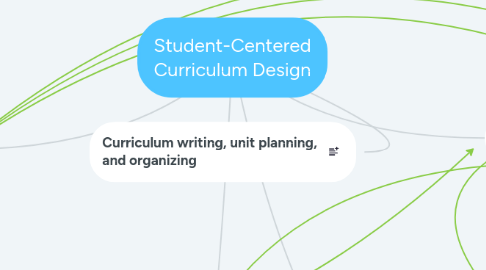Student-Centered Curriculum Design
作者:Ashley Doucette


1. Thematic in scope and sequence
1.1. My job is to provide relecvance , done through meaningful big ideas
1.2. Transdiciplinary and conceptually abstract theme, most stimulating and rigorous, where students start to make connections
1.3. Identify the goals of the unit and purpose for what you are going to teach
1.4. Focus on depth instead of breadth
1.5. OWN the curriculum
1.6. Human brain seeks patterns and naturally connects ideas to make sense of new information
1.7. Thematic instead of thingatic
1.8. Help students to INQUIRE
1.9. "Unpacking" the standards
1.10. Not what will you do with this theme, but what will STUDENTS do with this theme
1.11. PBL
1.12. Theme chunking to develop guiding questions and sub-thematic questions
1.13. Road map can help to outline for students what the unit will consist of and how it will all connect
2. essential questions
2.1. Use essential questions instead of objectives to start
2.2. Essential questions are open-ended, thought provoking, inviting, concise and clearly stated
2.3. Everyone knows something, we can help form connections by asking essential questions
2.4. Resolving disequilibrium and reorganizing new information and skills is essential for developing long-term memories
2.5. Constructivist teacher asks fewer, but broader questions
2.6. Questions
2.7. Guiding questions should provide 2-3 lessons
2.8. Sub-thematic questions should cover more than just a lesson or two, they should cover a couple of guiding questions
3. Curriculum writing, unit planning, and organizing
4. student-centererd inquiry
4.1. Whole to part instead of part to whole
4.2. Hamburger model
4.3. Know, Do, Understand
4.4. "An activity by itself does not a lesson plan make"
4.5. "HOW will they engage in inquiry to answer essential questions"
4.6. KDU's help to develop what we as teachers are hoping for students to take out the of unit
5. authentic assessment
5.1. Traditional Testing
5.2. Performance Assessments
5.3. Writing Assignment
5.4. In-depth projects
5.5. Demonstration of new found knowledge and skills
5.6. 2 components of summative assessments
5.6.1. Understanding and application of contect
5.6.2. Allows students to dig deeper into one specific aspect of the unit, opportunity for students to do their own investigation
